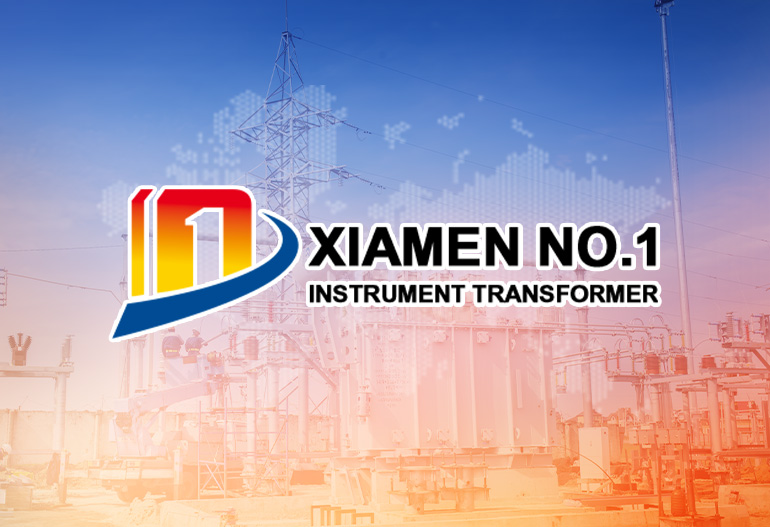Current Transformers in Substation Automation Systems
Load currents: Tracking flow through feeders, transformers, and busbars to optimize power distribution and prevent overloads.
Fault currents: Detecting abnormal currents (e.g., short circuits) to trigger rapid isolation via circuit breakers.
Harmonic currents: Identifying distortion caused by non-linear loads (e.g., inverters, motors) to maintain power quality.
Overcurrent relays use CT data to trip breakers when currents exceed safe limits, preventing equipment damage.
Transformer differential relays compare CT-measured currents on the primary and secondary sides to detect internal faults.
Busbar protection relies on synchronized CT data from multiple feeders to localize faults and minimize outage 范围.
Widely used: 成熟的技术,兼容 legacy and modern automation systems.
Cost-effective: Lower upfront costs for standard applications (e.g., distribution substations).
Challenged by digitization: Output analog signals requiring analog-to-digital converters (ADCs) in IEDs, introducing potential latency and noise.
Digital output: Integrates seamlessly with IEC 61850-based SAS, eliminating ADCs and reducing signal loss.
Wide bandwidth: Captures high-frequency transients (e.g., 10 kHz) critical for advanced protection algorithms.
Compact design: Lighter and smaller than EMCTs, ideal for space-constrained automated substations.
Retrofit-friendly: Used to upgrade legacy substations with additional current monitoring points.
Low-disruption: Avoids downtime during installation, critical for maintaining automation system availability.
Trade-off: Slightly lower accuracy (typically Class 0.5) compared to solid-core EMCTs due to small air gaps in the core.
Signal Compatibility: EMCTs require IEDs with analog inputs (e.g., 0–5A), while ECTs connect to digital inputs (via fiber or Ethernet).
Burden Matching: IED input impedance must match the CT’s secondary burden rating (per IEC 60044-1) to prevent accuracy degradation. For example, a 5A CT with a 10 VA burden requires IED input impedance ≤ 0.4 Ω (since VA = I²R → 10 = 5²×R → R = 0.4 Ω).
Synchronization: IEDs use IEEE 1588 PTP or GPS to time-stamp CT data, enabling precise fault location and sequence-of-events recording.
Process Bus (IEC 61850-9-2): Digital ECTs send sampled values (SV) over Ethernet, enabling real-time data sharing between IEDs. This reduces wiring and improves data integrity compared to analog signals.
Station Bus (IEC 61850-8-1): CT-derived metrics (e.g., average current, fault flags) are transmitted as MMS (Manufacturing Message Specification) messages to SCADA systems and HMIs.
Redundancy: Critical CT data paths use dual networks to prevent communication failures, ensuring protection systems receive uninterrupted inputs.
Trend Analysis: Identifying load patterns to optimize substation operation (e.g., adjusting transformer taps during peak hours).
Fault Simulation: Reconstructing fault events using synchronized CT and VT data to improve protection logic.
Predictive Maintenance: Analyzing current harmonics to detect early signs of equipment degradation (e.g., transformer winding faults).
Steady-State Accuracy: Class 0.2 for metering, Class 5P or 10P for protection (IEC 60044-1). Protection CTs must maintain accuracy during fault currents (up to 20× rated current).
Transient Response: ECTs with bandwidth ≥ 20 kHz capture fast-changing currents (e.g., during capacitor switching), critical for modern digital protection relays.
Linear Output: Minimal saturation under overloads to avoid distorting protection signals. EMCTs use “gapped cores” to extend linear range, while ECTs use digital compensation algorithms.
Withstand EMI: Comply with IEC 61000-6-2 (industrial EMC) to avoid measurement errors from nearby equipment.
Shielding: EMCTs use grounded metal enclosures; ECTs employ fiber optic cables (immune to EMI) for signal transmission.
MTBF (Mean Time Between Failures): ≥ 100,000 hours for ECTs, exceeding the 50,000-hour typical for EMCTs, reducing maintenance in automated substations.
Environmental Resistance: Operate in -40°C to +85°C temperatures, with IP65/IP67 enclosures to resist dust and moisture in outdoor substations.
Mechanical Stability: Withstand vibration (per IEC 60068-2-6) and seismic events (per IEEE 693) to maintain calibration in harsh conditions.
IEC 60044-1: Defines performance criteria for CTs, including accuracy classes, saturation limits, and insulation requirements.
IEC 61850: Ensures ECTs use standardized data models and communication protocols, enabling interoperability with IEDs from different manufacturers.
IEEE C57.13: Specifies requirements for CTs in North American substations, including burden designations (e.g., B-0.6 for 60 VA) and thermal ratings.
Application: Monitor feeder currents, detect overloads, and support fault location for outage management.
CT Type: Split-core or compact EMCTs (Class 0.5 for monitoring, Class 10P for protection).
Automation Integration: Data fed to feeder relays and SCADA systems to automate load balancing and restore power after faults.
Application: Protect transformers and busbars, monitor interconnection with the grid, and support wide-area stability control.
CT Type: ECTs or high-accuracy EMCTs (Class 0.2 for metering, Class 5P for differential protection).
Automation Integration: Sampled values from ECTs used in real-time digital simulation to predict voltage instability and trigger corrective actions (e.g., capacitor switching).
Application: Integrate solar/wind generation, managing variable currents from inverters and ensuring grid compliance.
CT Type: ECTs with wide dynamic range (1–20× rated current) to handle fluctuating renewable output.
Automation Integration: CT data used by grid-tie inverters to control reactive power and ride through faults per IEEE 1547.
Application: Fully digitalized substations with integrated communication and control.
CT Type: Digital ECTs with IEC 61850-9-2LE (low-energy) interface, eliminating copper wiring.
Automation Integration: CT data combined with AI algorithms for predictive fault detection, reducing unplanned outages by up to 30% (per industry studies).
Legacy System Integration: Retrofitting ECTs into older substations with analog IEDs requires costly converters or IED upgrades.
Data Security: Digital ECTs transmitting data over Ethernet are vulnerable to cyberattacks; encryption and intrusion detection are critical.
Cost Barriers: ECTs cost 2–3× more than EMCTs, slowing adoption despite long-term efficiency gains.
AI-Enhanced CTs: Embedded machine learning in ECTs to detect anomalies (e.g., incipient winding faults) and self-calibrate, reducing maintenance.
Multi-Sensor Integration: CTs combined with temperature/humidity sensors to provide contextual data for condition monitoring.
Energy Harvesting: ECTs powered by current-induced magnetic fields, eliminating the need for external power in remote substation locations.
Quantum Sensing: Emerging quantum-based CTs offering ultra-high accuracy (≤0.01%) and immunity to EMI, though still in R&D.



